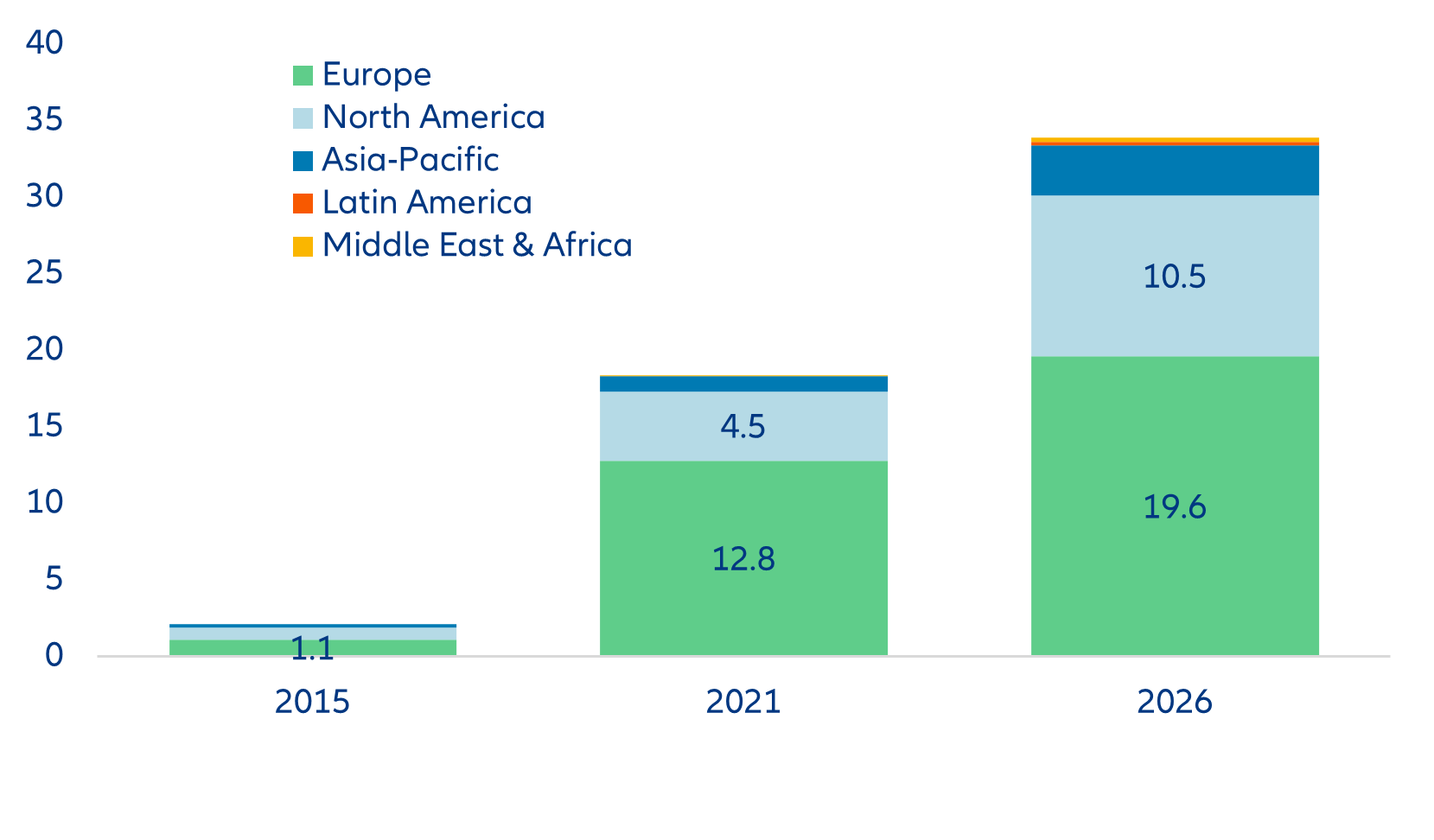- ESG is the trend in investing as an ever-increasing portion of portfolios from individual savers to large institutions is directed towards sustainable strategies. It is poised to become the key market driver over the next few years, with ESG assets set to grow by almost +13% p.a. until 2026, reaching USD34trn, compared to total market growth of only +4.3%.
- However, the ESG boom has sparked some severe criticism over potential conflicts of interest, financial performance and above all measurability, given the limited amount of available data. While the first two points seem to be overblown – solving trade-offs is the essence of management, and non-financial factors become financially material in the long-run – the problem of information availability is a valid one. But the situation is bound to improve significantly, not least given the flurry of new disclosure requirements.
- While it is increasingly possible to evaluate the progress in the “E” in ESG, the situation is more challenging for the “S” and the “G”, as required by the new Corporate Sustainability Reporting Directive (CSRD). Evaluating impact requires not only knowledge of the current state but also the necessary social transition pathways that are in compliance with societal goals. We introduce a new approach for addressing this challenge by using the United Nations Sustainable Development Goals (SDGs). Evolving from the limited focus on the climate transition to the inclusion of transition goals for all 17 SDGs ultimately provides the full ESG picture, paving the way for a just transition.
ESG: A growing market…
Sustainable finance is booming: From individual savers to large institutions, investors are dedicating an ever-increasing share of their portfolios towards ESG (environment, social, governance) financial products to support the transition to a just, sustainable and low-carbon economy. As traditional sources of growth in the wealth management market are threatened by the transition, ESG is poised to become a key market driver. In fact, over the next five years, according to PwC, ESG-oriented funds are set to grow much faster than the market as a whole (+12.9% vs +4.3%). With ESG Assets under Management (AuM) under this scenario set to reach USD34trn by 2026, the ESG share of overall AuM would increase from 14.4% in 2021 to more than one-fifth of all assets (21.5%) by 2026. Other forecasts are even more upbeat: According to Bloomberg Market Intelligence, ESG AuM could reach USD50trn in 2025.
Global ESG Assets under Management

Download complete report
Contact
Allianz SE
Allianz SE